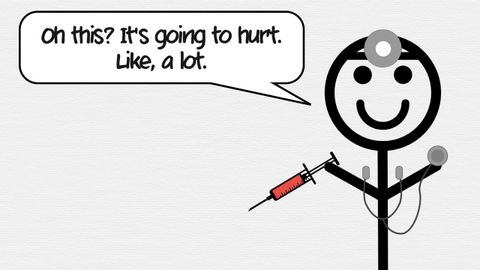この動画は痛い目に遭う (This Video Will Hurt)
VoiceTube が 2021 年 01 月 14 日 に投稿  この条件に一致する単語はありません
この条件に一致する単語はありません- n. (c./u.)(同じ文化を共有する)民族;人々;人々;親族;社員
- v.t.居住する
- n. pl.人々
- v.t./i.嫌がる;世話をする;従う;気をつける
- n. (c./u.)意見;心;知性;記憶
US /ɪkˈspɛrəmənt/
・
UK /ɪk'sperɪmənt/
- n. (c./u.)実験;試み
- v.t./i.実験をする;試みる
エネルギーを使用
すべての単語を解除
発音・解説・フィルター機能を解除

